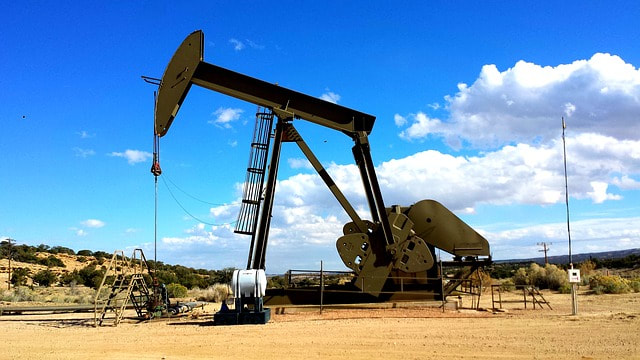Contact us Today to Learn More
(682)651-1662
(682)651-1662
Nothing in this article is to be considered legal, tax or investment advice. Please consult with your attorney and tax professional.
Direct Investing in Oil Wells
Investing in oil wells is lucrative strategy for avoiding the stock market and often times yields significant tax benefits. Oil makes the world go around, and that is certainly not going to change any time soon, because there is still a high demand for oil. Similarly, natural gas is a good source of cooking and heating energy. It can also be converted into electricity and diesel fuel. It is also vital in the manufacture of chemical fertilizers.
While the price of oil has increased over time, the demand for natural gas has been low since 2012, meaning this is the best time to buy natural gas and sell when demand increases or supply decreases. Investing in oil well has its benefits, but you must first understand the risks involved. So, what does this mean? Direct oil well investment is also known as direct participation program. This program is divided into two categories: working interest ownership and limited partnership ownership.
Working Interest Ownership
This is a standard investment channel that was used in the early 1920's for oil drilling programs. In this channel, you own a piece of the oil well and your obligations are higher than in a limited partnership.
Limited Partnership Ownership
Oil and gas partnership started in the early 70's. The difference between working interest ownership and limited partnership is that the latter incorporates working capital to give more power to the general partners. Management fees and revenue sharing are calculated once payouts are done.
While the price of oil has increased over time, the demand for natural gas has been low since 2012, meaning this is the best time to buy natural gas and sell when demand increases or supply decreases. Investing in oil well has its benefits, but you must first understand the risks involved. So, what does this mean? Direct oil well investment is also known as direct participation program. This program is divided into two categories: working interest ownership and limited partnership ownership.
Working Interest Ownership
This is a standard investment channel that was used in the early 1920's for oil drilling programs. In this channel, you own a piece of the oil well and your obligations are higher than in a limited partnership.
Limited Partnership Ownership
Oil and gas partnership started in the early 70's. The difference between working interest ownership and limited partnership is that the latter incorporates working capital to give more power to the general partners. Management fees and revenue sharing are calculated once payouts are done.
Ways to Invest Directly in Oil Wells
There are several ways through which you can directly invest in oil wells. First and foremost, think of the industry as a collection of business entities that provide products and services to stakeholders and consumers. The oil industry is like a commodity where you can make a profit from changes in prices of diesel gasoline, crude oil and other products.
Here is how you can invest in oil wells directly:
Private Placements
Own an oil and gas well by investing directly in oil and gas drilling projects. Investing has several benefits, including:
Tax sheltered income, Tax advantages, Portfolio diversification
ETFs and Mutual Funds
You can purchase oil shares from ETFs and mutual funds. The benefit of this method of investment is that it exposes you to the product without encountering direct risks in spot prices.
ADRs and Large Cap Stocks
There are several ways you can gain exposure to the oil market through public traded firms.
A good example is (NYSE: XOM), which is one of the largest traded companies in the world. There are many other oil and gas companies that sell oil stocks. Most of these companies are involved in oil exploration, meaning you can purchase direct exposure through ADRs with the help of your non traditional investment adviser.
Futures Contracts
Oil future contracts are also lucrative, but the derivatives can be very risky since contracts usually expire without monetary value.
Here is how you can invest in oil wells directly:
Private Placements
Own an oil and gas well by investing directly in oil and gas drilling projects. Investing has several benefits, including:
Tax sheltered income, Tax advantages, Portfolio diversification
ETFs and Mutual Funds
You can purchase oil shares from ETFs and mutual funds. The benefit of this method of investment is that it exposes you to the product without encountering direct risks in spot prices.
ADRs and Large Cap Stocks
There are several ways you can gain exposure to the oil market through public traded firms.
A good example is (NYSE: XOM), which is one of the largest traded companies in the world. There are many other oil and gas companies that sell oil stocks. Most of these companies are involved in oil exploration, meaning you can purchase direct exposure through ADRs with the help of your non traditional investment adviser.
Futures Contracts
Oil future contracts are also lucrative, but the derivatives can be very risky since contracts usually expire without monetary value.
Micro-cap Stock and Limited Partnerships
A micro-cap stock allows you access to a direct equity position in a small project or small-size firm. Consider investing in a limited partnership that focuses on oil. You must know, however; this type of investment is not publicly traded. You may find the help of an experienced nontraditional investment adviser helpful to access these types of investments.
Questions to Ask Yourself Before You Invest Directly in Oil Wells
Questions to Ask Yourself Before You Invest Directly in Oil Wells
- Did you make more than $200,000 per annum, in the last two years?
- Do you expect to make more than this amount next year?
- Do you have a net worth of more than 1 million US dollars either as an individual or jointly with your spouse?
- Can you afford the total loss of your investment?
Tax Benefits of Oil and Gas Investing
80% of investments made is considered intangible drilling and can be subtracted from the money you earn. Examples of these intangibles are grease, mud, chemicals, and labor. These costs normally take between 60 to 80 percent of the total cost of oil drilling. For instance, if drilling a well cost $150,000 to drill a well and 75 percent of the cost is considered intangible, investors would get a deduction of $112,500. These costs are deducted yearly.
Moreover, it does not matter if the well strikes or produces any oil, deductions are made as soon as drilling commences. Intangible drilling costs are regarded as “tax preference item,” hence they are exempted when considering the 1992 Tax Act, Alternative Minimum Tax.
20% of investments made is considered tangible drilling costs. Tangible costs are directly related to the value of drilling equipment. These costs are also deducted per annum. They can be subtracted if incurred in the first year. 100% of these expenses are subtracted in the year of investment. Companies, through the IRS tax code, Section 179, can subtract the purchase price of equipment bought or funded in the tax year. There is also “depletion deduction” which allows $10 percent of oil and gas gross income to be tax-free.
Moreover, it does not matter if the well strikes or produces any oil, deductions are made as soon as drilling commences. Intangible drilling costs are regarded as “tax preference item,” hence they are exempted when considering the 1992 Tax Act, Alternative Minimum Tax.
20% of investments made is considered tangible drilling costs. Tangible costs are directly related to the value of drilling equipment. These costs are also deducted per annum. They can be subtracted if incurred in the first year. 100% of these expenses are subtracted in the year of investment. Companies, through the IRS tax code, Section 179, can subtract the purchase price of equipment bought or funded in the tax year. There is also “depletion deduction” which allows $10 percent of oil and gas gross income to be tax-free.
Other Distinct Benefits of Investing in Oil Well as Compared to Purchasing Stocks
Investing in oil wells allows investors to engage directly into the investment because their funds are invested in several wells. However, even drilling success can get diluted at shareholder levels. There is a possibility of making a lot of profit because the price of oil increases and is much higher via direct investments. These projects have the potential of earning significant revenues for investors, especially through International Energy Network.
Before you invest directly in oil wells, do your research and invest in a company that offers promising investment opportunities. Reliable companies often show the cost of their research projects and yields in the net return to shareholders.
Before you invest directly in oil wells, do your research and invest in a company that offers promising investment opportunities. Reliable companies often show the cost of their research projects and yields in the net return to shareholders.
For more information about oil well investing, contact United Exploration for more information. Nothing in this article is to be considered tax or investment advice. Please consult with your attorney and tax professional.
Note: nothing in this article is to be considered tax or investment advice. Please consult with your attorney and tax professional





